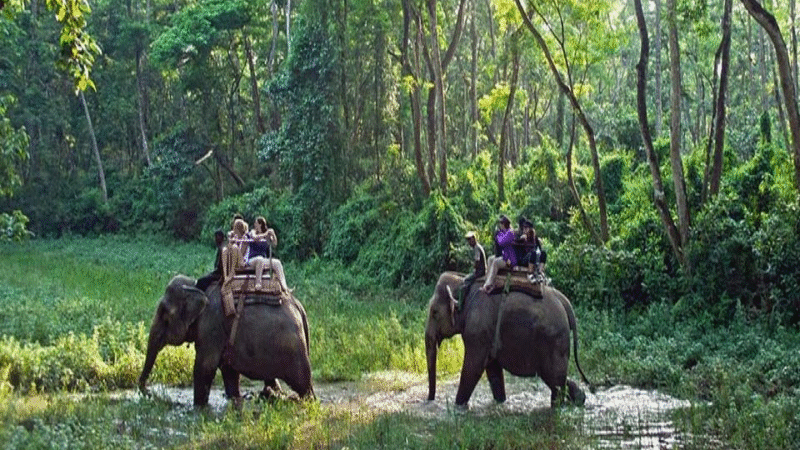Upper Mustang Trek: Journey to the Last Forbidden Kingdom

The Upper Mustang Trek stands as one of Nepal’s most extraordinary and culturally immersive trekking experiences, offering adventurers a rare glimpse into the ancient kingdom of Lo. This restricted area trek transports visitors to a mystical landscape that feels frozen in time, where Tibetan Buddhist culture thrives in its purest form against a backdrop of stunning high-altitude desert terrain.
The Mystique of Upper Mustang
Upper Mustang, officially known as the Kingdom of Lo, remained a restricted area until 1992, earning it the moniker “Last Forbidden Kingdom.” This isolation has preserved its unique culture, ancient monasteries, and traditional way of life that dates back over a millennium. The Upper Mustang Trek provides access to this remarkable region, where visitors can witness cave dwellings carved into cliff faces, medieval fortresses, and spiritual practices unchanged by modern influences.
The trek traverses through landscapes reminiscent of the Tibetan plateau, featuring dramatic red cliffs, wind-carved canyons, and vast open valleys dotted with traditional stone villages. At an average altitude of 3,800 meters, the region experiences a rain shadow effect from the Himalayas, creating an arid, almost lunar landscape that contrasts sharply with Nepal’s green hills and dense forests.
Cultural Immersion and Historical Significance
The Upper Mustang Trek offers unparalleled cultural experiences, immersing trekkers in the living heritage of the Loba people. The capital city of Lo Manthang, walled and medieval in character, serves as the trek’s crown jewel. Here, the King of Mustang still maintains ceremonial authority, and visitors can explore the royal palace, ancient monasteries, and witness traditional festivals that have been celebrated for centuries.
Throughout the journey, trekkers encounter numerous gompas (monasteries) housing priceless Buddhist artifacts, ancient murals, and manuscripts. The Thubchen Gompa and Jampa Gompa in Lo Manthang contain some of the finest examples of Tibetan Buddhist art outside of Tibet itself. Local monks often welcome visitors, sharing insights into their spiritual practices and the region’s rich religious traditions.
The traditional architecture along the Upper Mustang Trek route showcases the ingenuity of high-altitude construction. Flat-roofed houses built from local stone and mud bricks are perfectly adapted to the harsh climate, while prayer flags flutter from rooftops, adding splashes of color to the muted landscape.
Trekking Route and Itinerary
The standard Upper Mustang Trek typically spans 12-16 days, beginning with a flight from Kathmandu to Jomsom, the gateway to the region. The trek follows ancient trade routes between Nepal and Tibet, passing through villages that have served as important stops for centuries.
Key highlights along the route include:
Kagbeni: Known as the gateway to Upper Mustang, this medieval village features narrow alleyways, traditional architecture, and the impressive Kag Chode Tsurphu Monastery. The village offers stunning views of Nilgiri Peak and serves as the last checkpoint before entering the restricted area.
Charang: Home to magnificent monasteries and the former capital of the Lo kingdom, Charang features the impressive Charang Monastery with its towering walls and ancient Buddhist relics. The village provides excellent acclimatization opportunities and cultural experiences.
Lo Manthang: The highlight destination of the Upper Mustang Trek, this walled city represents one of the last preserved medieval settlements in the Himalayas. Trekkers can explore the Royal Palace, visit ancient monasteries, and experience traditional Loba hospitality.
The trek also includes visits to mysterious caves that once served as meditation retreats, burial chambers, and living quarters. Some caves reach heights of several stories and contain well-preserved murals and artifacts that provide insights into the region’s ancient history.
Practical Considerations and Requirements
The Upper Mustang Trek requires special permits due to its status as a restricted area. Trekkers must obtain a special Upper Mustang permit, which costs significantly more than standard trekking permits but helps preserve the region’s cultural integrity and environmental protection. Additionally, visitors must be accompanied by a licensed guide and trek in groups of at least two people.
The ideal seasons for the Upper Mustang Trek are spring (March to May) and autumn (September to November), when weather conditions are most favorable. The region’s rain shadow location makes it one of the few areas in Nepal suitable for trekking during monsoon season, though spring and autumn offer the clearest mountain views and most comfortable temperatures.
Accommodation along the route consists primarily of traditional tea houses and homestays, providing authentic cultural experiences while supporting local communities. Meals typically feature traditional Tibetan and Nepali cuisine, with dal bhat, momos, and tsampa being common offerings.
Physical Demands and Preparation
The Upper Mustang Trek presents moderate physical challenges, with daily walking distances ranging from 4-7 hours across varied terrain. While not technically demanding, the high altitude requires proper acclimatization and physical fitness. The trek involves crossing several high passes, with the highest point reaching approximately 4,000 meters.
Strong winds are common in the region, particularly during afternoons, making early morning starts advisable. Trekkers should prepare for significant temperature variations, with warm days and cold nights being typical throughout most of the year.
Environmental and Cultural Conservation
The restricted permit system for the Upper Mustang Trek serves important conservation purposes, limiting visitor numbers to protect both the fragile high-altitude environment and the unique cultural heritage. This approach ensures that tourism benefits local communities while preserving the authentic character that makes the region so special.
Visitors contribute directly to conservation efforts through permit fees and local spending, supporting community-based tourism initiatives that provide sustainable income for Loba families while maintaining traditional lifestyles.
Conclusion
The Upper Mustang Trek represents far more than a typical Himalayan adventure; it offers a transformative journey into one of the world’s last remaining medieval kingdoms. This extraordinary experience combines stunning high-altitude landscapes with profound cultural immersion, providing trekkers with memories that last a lifetime.
For those seeking authentic cultural experiences, dramatic landscapes, and the privilege of visiting one of the world’s most restricted regions, the Upper Mustang Trek delivers an unmatched adventure. The combination of ancient Buddhist culture, spectacular scenery, and the mystique of the “Last Forbidden Kingdom” creates a trekking experience that stands apart from any other in the Himalayas.
Whether drawn by the cultural richness, historical significance, or simply the allure of exploring forbidden territories, the Upper Mustang Trek provides an exceptional opportunity to witness a way of life that has remained largely unchanged for centuries, making it an essential destination for serious cultural explorers and adventure seekers alike.




